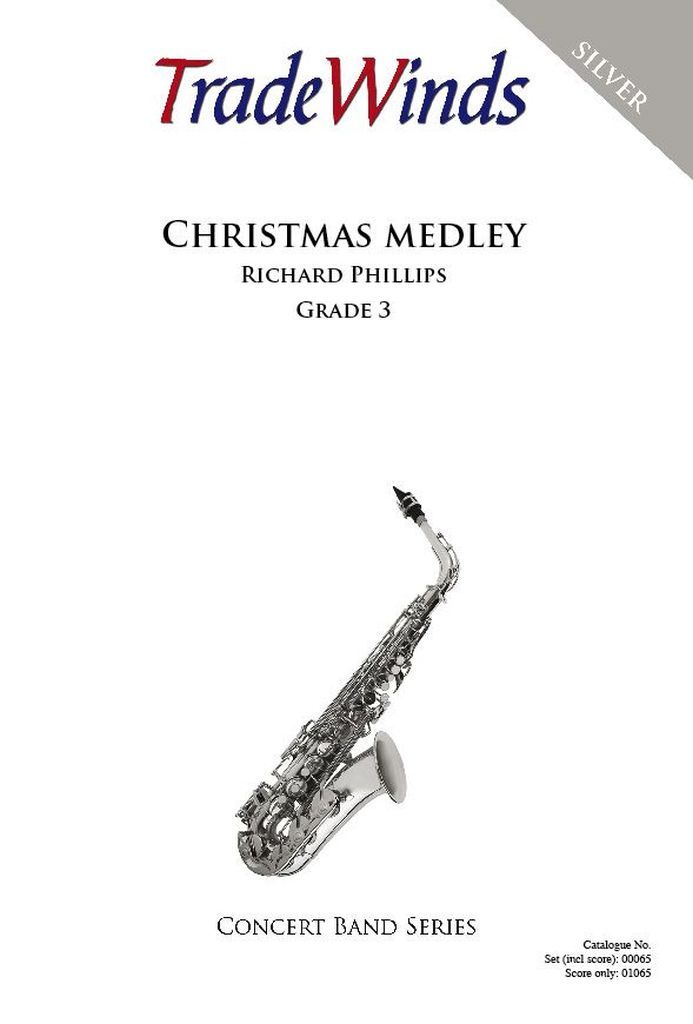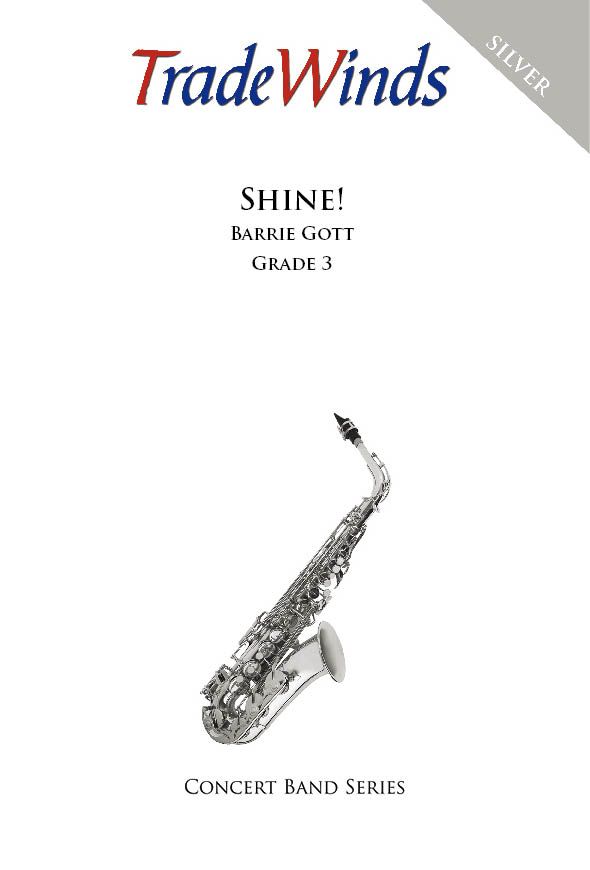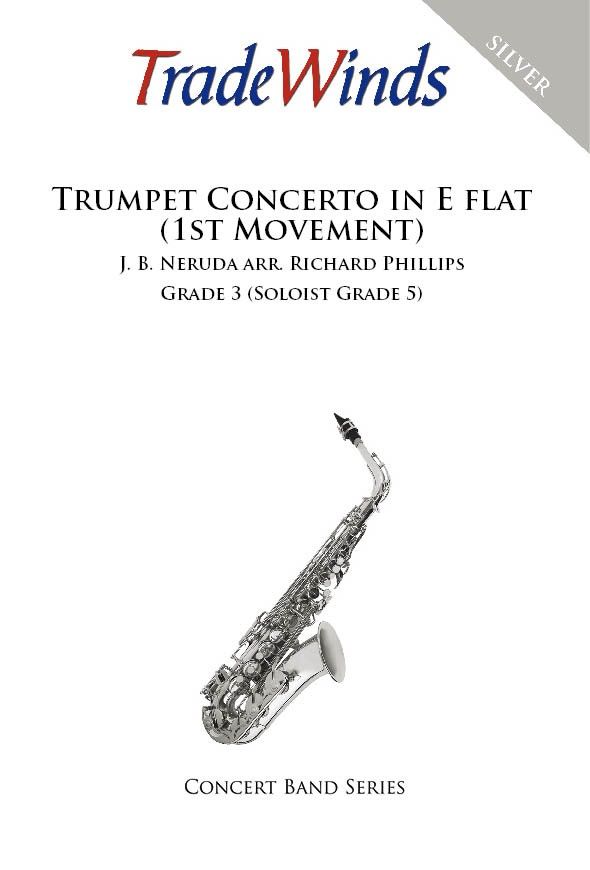Results
-
£92.00
A Mother's Treasure (CB) - Jan De Maeseneer
A Mother's Treasure tells the musical story of the mother who sees her daughter grow up. As a little girl she is playing simple pieces that you will hear back in the trumpet part. Later she is in her teens when she go in search for some challenges, to herself as a musician and as a person. In the last part of the composition she finds peace and enjoys life that her mother has given her.
Estimated dispatch 7-14 working days
-
 £54.95
£54.95Christmas Medley
Carol sing-a-longs are a popular inclusion in concerts at Christmas time and this Christmas Medley of 6 well-known traditional carols is designed for both that purpose or as a stand alone concert item. Joy to the World, O Little Town of Bethlehem, Ding Dong, Merrily on High, Silent Night, Angels from the Realms of Glory and The First Nowell are arranged in such a way that encourages either hearty singing from the audience or an attractive item for choir and Wind Band. As a stand-alone concert piece it would make either a good opener or finisher to a concert of seasonal music.
Estimated dispatch 7-14 working days
-
 £54.95
£54.95Shine!
Composer: Barrie GottDuration: 3.00Series: Silver TradeWinds Concert Band SeriesGrade/Difficulty: 64Barrie Gott, originally from Sheffield, now living in in the suburbs of Sydney Australia has, in the past, composed 2 very successful swing numbers, entitled Light-walk and Swingtime Religion; here is a brand new third piece to add to the collection. Set around the spiritual This little light of mine it will feature well on most types of concert programme and will be enjoyed by all.
Estimated dispatch 7-14 working days
-
 £44.95
£44.95Trumpet Concerto in E Flat (1st Movement)
Composer: J. B. NerudaDuration: 6:00Series: Silver TradeWinds Concert Band SeriesGrade/Difficulty: 28Arranger: Richard PhillipsJohan Baptist Georg Neruda was a classical composer born in Bohemia which is now part of the Czech Republic. Very little is known about this composer other than he had a good reputation as a violinist and conductor in Prague and Germany and became the Konzertmeister of the Dresden Court Orchestra.
Estimated dispatch 7-14 working days
-
 £65.00
£65.00Angels of Christmas
Angels of Christmas is a beautiful and original addition to the holiday repertoire. This lyrical ballad skillfully weaves together fragments from three well-known Christmas carols--Angels We Have Heard on High, Hark, the Herald Angels Sing, and O Little Town of Bethlehem--that reference the appearance of angels. The carols' melodies are interwoven with bold harmonies and shifting instrumental colors, creating a rich tapestry of sound. The piece builds to a jubilant climax before transitioning into a poignant ending, offering a sensitive and fresh interpretation of these timeless carols.
Estimated dispatch 12-14 working days
-
 £38.00
£38.006-Note Folk Song Suite
6-Note Folk Song Suite is intended for a young band with at least six weeks training. The suite is comprised of four familiar melodies:Mary Had a Little Lamb, Go Tell Aunt Rhody, Hot Cross Buns, and When the Saints Go Marching In. Every instrument is showcased with an opportunity to play the melody. Using only 6 notes of the B-flat scale, each tune can be performed as an independent melody, without repeats if needed.
Estimated dispatch 12-14 working days
-
 £50.00
£50.00Island Drummer Boy
Island Drummer Boy is a fresh take on the classic holiday song "Little Drummer Boy." This tropical twist on the familiar melody invites listeners to a sunny paradise. From crisp staccatos to smooth legatos, each articulation contributes to the unique island vibe, creating a rich and textured musical experience. An irresistible percussion groove sets the rhythm and pace of the music, invoking images of swaying palm trees and gentle ocean breezes in this festive celebration.
Estimated dispatch 12-14 working days
-
 £50.00
£50.00Napoleon's Last Dance - Randy Navarre
Let's introduce 3/4 time: a waltz. But not just any waltz! This song is a bit mysterious, and gentle with both soft and bold sounding sections. The harmonies are a little different than you may hear at this grade level. Secondary dominants and a few other surprising chords sound out at times. You will impress your audience!
Estimated dispatch 12-14 working days
-
 £65.00
£65.00Swingin' Christmas
Add a unique twist to your next holiday concert! This arrangement features fun and unexpected swing jazz renditions of six classic Christmas carols. "Joy to the World," "Silent Night," "O Come All Ye Faithful," "Away in a Manger," "We Three Kings," and "O Little Town of Bethlehem" are all woven together in this up-tempo selection that your audience will definitely remember. A fresh take on classic carols to make your Christmas swing!
Estimated dispatch 12-14 working days
-
 £57.00
£57.00Many Moons
A poignant balladic description of a memory of a New Mexico night sky, this lyrical piece encapsulates the feeling of wonder and humility felt when we stare out at a sky seemingly filled with hundreds of little moons. Beginning with subtle percussion and a cross-cued euphonium solo, a wistful theme is developed and passed throughout the ensemble. Multiple expressive demands related to phrasing, balance, listening, and tone let you teach these in a composition that sounds harder than it is. Use this ballad as a contrast to your opener in concert or as a second selection in festival or contest performances.
Estimated dispatch 12-14 working days
